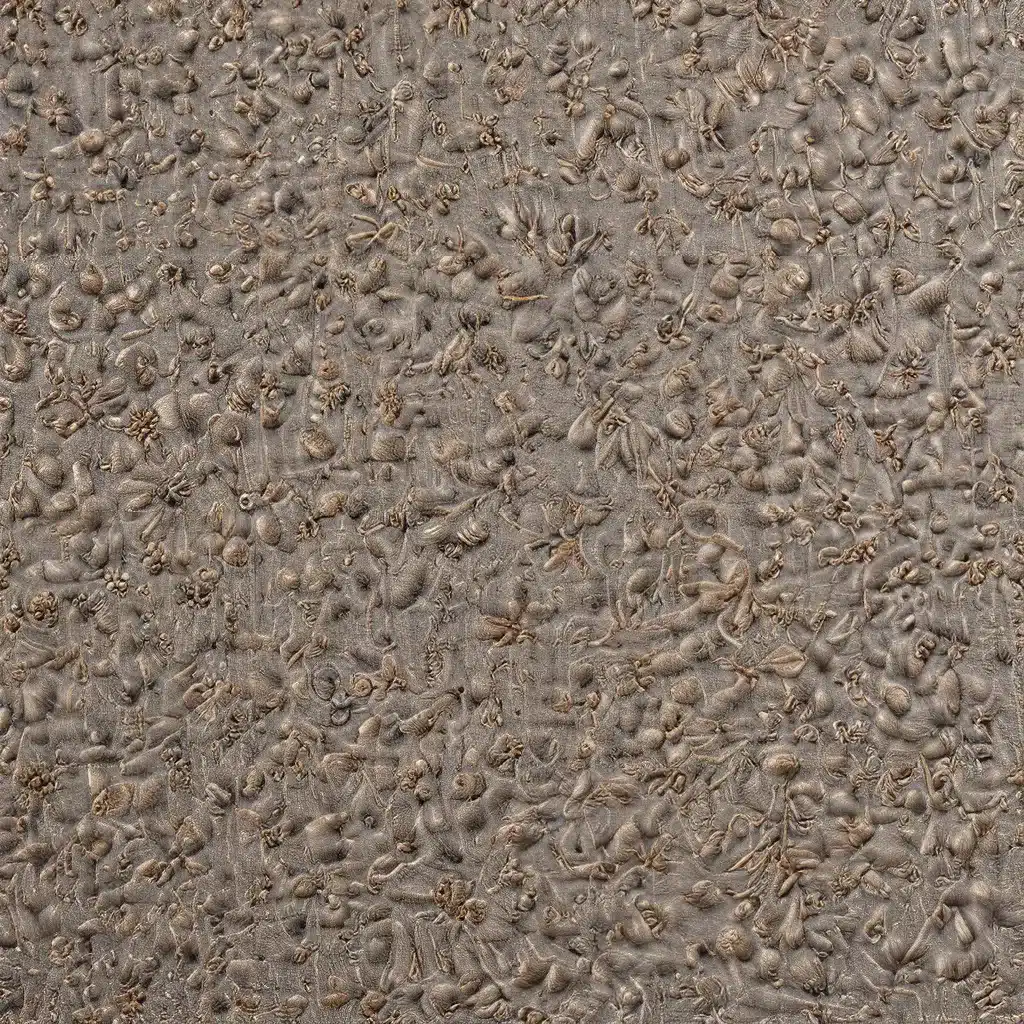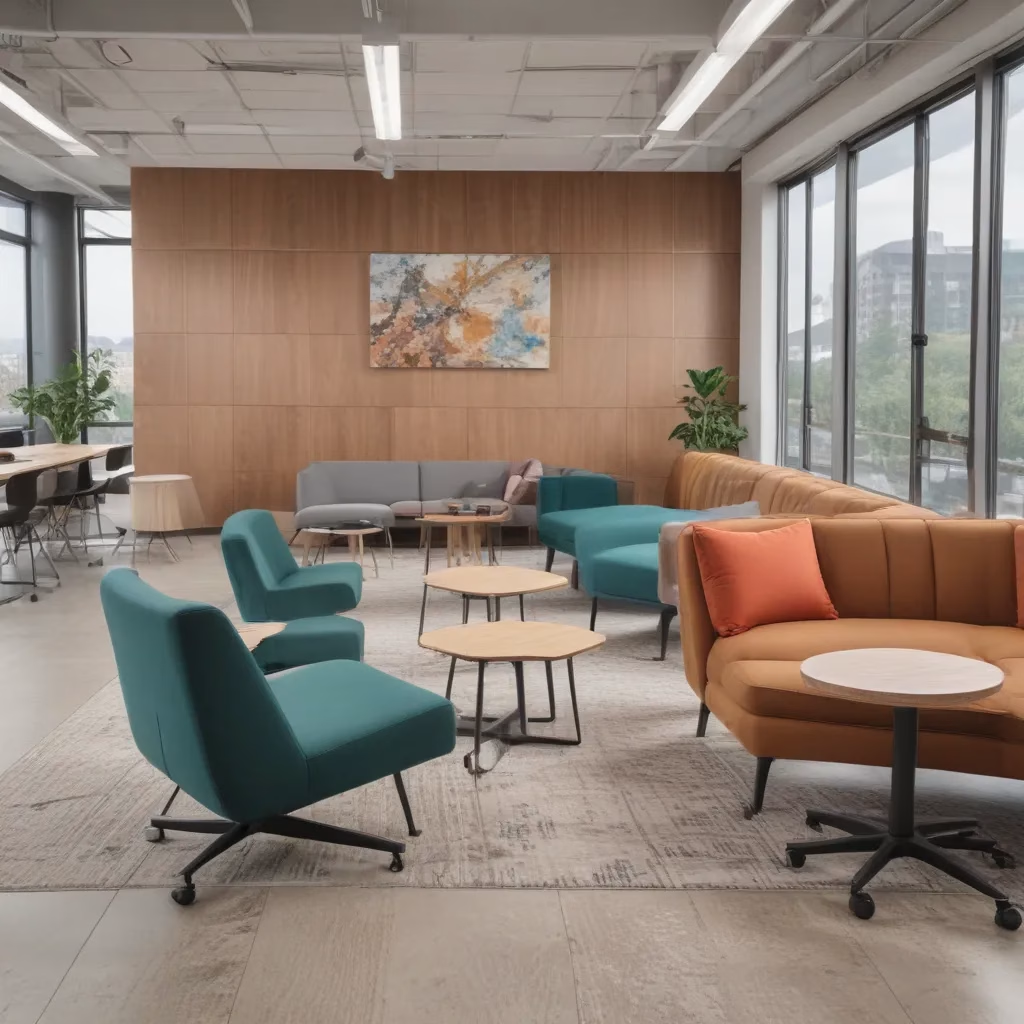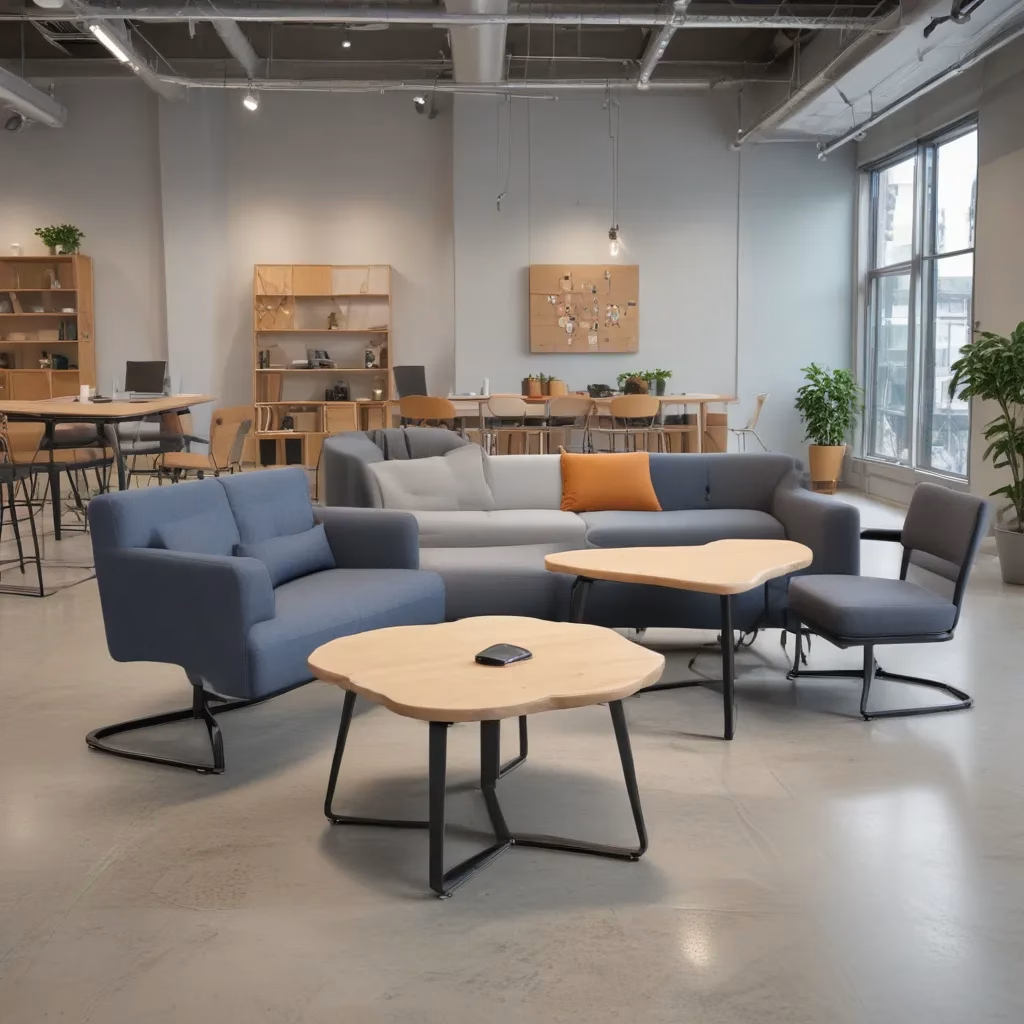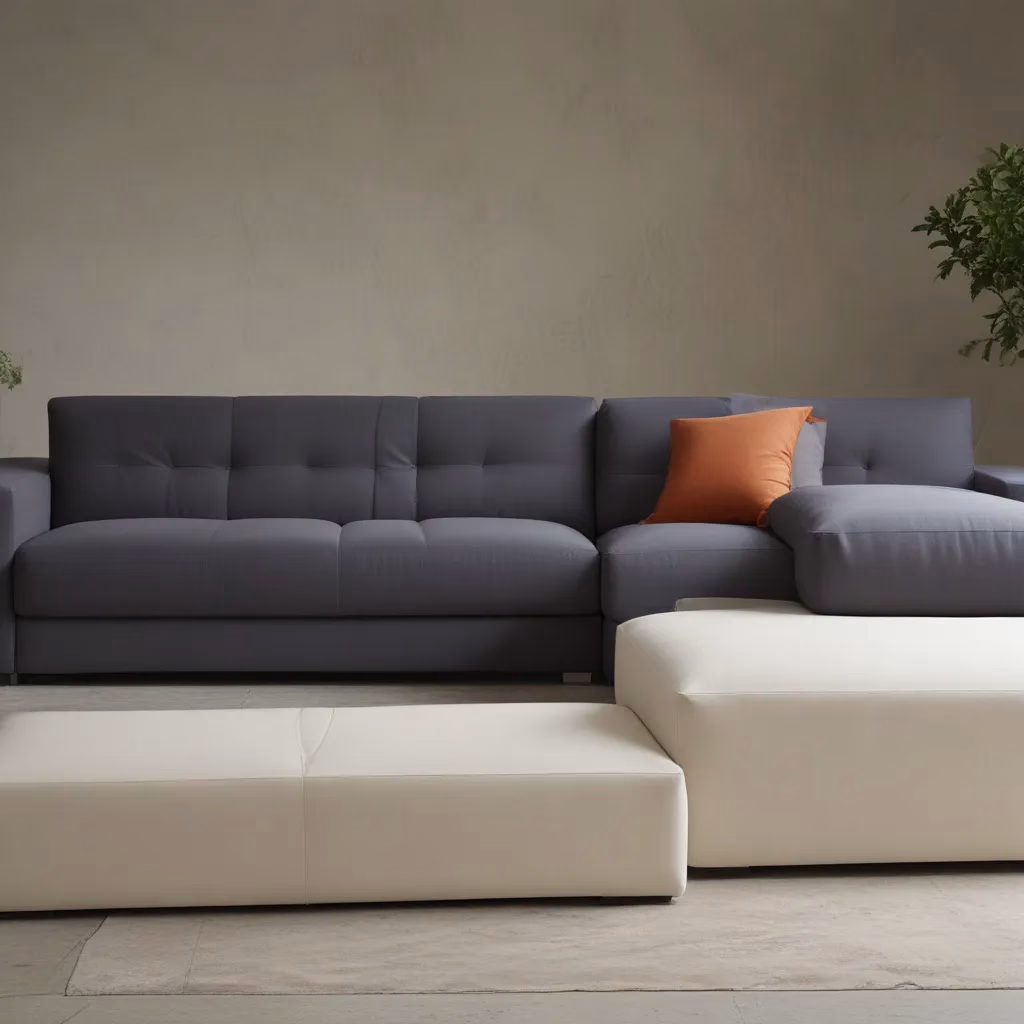
When it comes to creating a warm, inviting, and visually captivating space, there’s one design element I always find myself coming back to – texture. Whether it’s the plush softness of a mohair throw, the elegant sheen of a velvet sofa, or the rustic charm of a boucle armchair, thoughtfully layered textures have an incredible ability to transform a room, elevating the design and evoking a comforting sense of coziness.
As an interior designer, I’ve had the privilege of exploring the world of textiles and upholstery techniques, and I’m excited to share some of my favorite tips and tricks with you. So, grab a cup of tea, get cozy, and let’s dive into the world of Texture Talk.
The Power of Textiles
Textiles are the foundation upon which we build our cozy sanctuaries. They have the power to not only create the visual impression of warmth, but to actually provide physical warmth and comfort as well. From the moment you sink into a plush velvet sofa or wrap yourself in a soft wool throw, you can’t help but feel a sense of ease and contentment wash over you.
As I’ve mentioned before, some of my absolute favorite textiles for adding that coveted sense of coziness include:
Wool: This natural fiber is a true crowd-pleaser, offering unparalleled comfort and versatility. Whether incorporated into a lush area rug, sumptuous throw pillows, or a cozy blanket, wool is a surefire way to ground a space and create a warm, inviting atmosphere.
Boucle: The beautifully textured boucle fabric is a personal favorite of mine, especially during the cooler months. With its heavy, tactile nature, boucle instantly telegraphs warmth and comfort, making it a stunning choice for chairs, sofas, or accent pillows.
Mohair: Soft, shimmering, and insulating, mohair is the ultimate in cozy sophistication. Its natural luster and resistance to creasing make it a fantastic option for high-traffic furniture like sofas or sectionals, where you want that lived-in, snuggle-worthy feel.
Velvet: For a true statement piece that’s sure to captivate the eye, you can’t go wrong with the rich, luxurious texture of velvet. This versatile fabric holds color beautifully, allowing you to play with bold hues and create a sense of depth and dimension.
The beauty of these textiles lies not only in their visual appeal but in their ability to transform the very atmosphere of a room. With just a few strategically placed pieces, you can turn a cold, lackluster space into a warm, inviting oasis that beckons you to sink in and stay awhile.
Textural Contrast: The Art of Mixing Materials
While textiles are undoubtedly the stars of the show when it comes to creating cozy, textured spaces, they’re not the only design elements at our disposal. In fact, some of the most visually striking and memorable interiors are those that seamlessly blend a variety of materials, each contributing its own unique textural qualities.
As I mentioned in my previous post, some of my favorite textural combinations include the juxtaposition of lucite and brass, as well as the interplay of wood and metal. The unexpected contrast between these materials creates a captivating sense of visual interest, elevating the design to new heights.
But it doesn’t stop there – the possibilities for textural exploration are truly endless. Have you ever considered the unique charm of vintage textiles, like antique quilts or unique pillows gathered from around the world? These one-of-a-kind pieces not only add a layer of personalized warmth and character, but they also tell a story – a story of the places you’ve been and the experiences you’ve had.
Another unexpected way to incorporate texture is through the use of fabric-covered walls. This innovative technique allows you to bring in pattern, color, and a cozy, enveloping feel without the commitment of traditional wallpaper. And for those of us who are renting or simply want a more temporary solution, it’s a fantastic way to transform a space and make it feel like a true reflection of your personal style.
The key to mastering the art of textural contrast is to embrace the unexpected and push the boundaries of traditional design. Don’t be afraid to experiment, to layer, and to find unexpected ways to incorporate the materials that speak to you. After all, the most captivating interiors are often the ones that defy convention and surprise us at every turn.
Texture and the Senses
As an interior designer, I’ve come to understand that the power of texture extends far beyond the realm of visual aesthetics. In fact, our sense of touch plays a crucial role in shaping our overall experience of a space – and it’s a factor that’s often overlooked in the design process.
Think about it – when you enter a room, the first thing you often want to do is reach out and touch the various surfaces and furnishings. The softness of a velvet sofa, the warmth of a wooden side table, the coolness of a glass coffee table – these tactile sensations have a profound impact on how we perceive and interact with our surroundings.
During my travels to Japan, I had the opportunity to immerse myself in the world of traditional textile arts, and it was a revelatory experience. From the intricate shibori dyeing techniques to the meticulous weaving of the Nishijin district, I was struck by the sheer artistry and attention to detail that went into each and every piece.
As I ran my fingers over the delicate fabrics, felt the weight and drape of the materials, and observed the skilled hands of the artisans at work, I couldn’t help but be transported to another time and place. It was a sensory experience that went beyond the visual, engaging all of my senses and leaving a lasting impression.
This realization has profoundly shaped my approach to interior design. I now strive to create spaces that not only look beautiful, but that also invite touch and interaction. Whether it’s the inviting plushness of a sheepskin rug, the smooth curves of a hand-carved coffee table, or the tactile warmth of a woven wall hanging, I aim to engage all of the senses, creating an immersive and unforgettable experience for my clients.
After all, isn’t that what we all crave – a space that not only captures our eye, but that also envelops us in a cocoon of comfort and sensory delight? By embracing the power of texture, we can design environments that truly nourish the soul and bring us closer to the things we love.
Texture and Ambiance: Striking the Right Balance
As any seasoned designer will tell you, the true art of creating a harmonious, textured space lies not just in the individual elements, but in the delicate balance between them. Texture isn’t just about piling on the cozy fabrics and materials – it’s about striking the perfect equilibrium between comfort and sophistication, between warmth and elegance.
When I’m working on a project, I always keep the room’s intended purpose top of mind. For example, a cozy family room meant for gathering and relaxation should be grounded in soft, inviting textiles like wool, fleece, or mohair, balanced with thoughtful touches of wood, brass, or even an unexpected material like glass.
On the other hand, a more formal entertaining space might benefit from a slightly more polished, sophisticated approach – perhaps incorporating luxurious fabrics like silk or linen, punctuated by sleek, modern accents. The key is to create a harmonious blend that elevates the design without sacrificing the sense of comfort and warmth.
Of course, the specific balance you strike will depend on the unique character of the space, the needs and preferences of your clients, and your own personal design aesthetic. But the underlying principle remains the same: textural elements should work together to create a cohesive and compelling whole, enhancing the overall ambiance and atmosphere of the room.
It’s a delicate dance, to be sure, but the payoff is well worth it. When you get that balance just right, the result is a space that captivates the senses, invites lingering, and leaves a lasting impression on all who enter. And isn’t that what great design is all about?
Texture and the Future: Embracing Innovation
As I look to the future of interior design, I’m excited by the endless possibilities that the world of texture has to offer. With advancements in materials, manufacturing techniques, and even the incorporation of smart home technologies, the ways in which we can incorporate texture and tactility into our living spaces are evolving at a rapid pace.
Imagine a day when the upholstery on your sofa from Sofa Spectacular not only looks and feels luxurious, but can also adjust its temperature and even respond to your voice commands, creating a truly immersive and personalized experience. Or what about a set of throw pillows that can transform their texture and color to suit your mood or the occasion?
The truth is, the boundaries of what’s possible are constantly being pushed, and I can’t wait to see how designers and innovators continue to push the envelope. Whether it’s the integration of cutting-edge materials, the exploration of new manufacturing processes, or the seamless blending of technology and texture, the future of interior design is poised to be more dynamic, customizable, and sensory-rich than ever before.
Of course, as an interior designer, I’ll always have a deep appreciation for the timeless beauty and craftsmanship of traditional textiles and materials. But I’m also endlessly fascinated by the potential for innovation, and I’m eager to see how the designers and makers of tomorrow will redefine the way we experience and interact with our living spaces.
One thing is for certain: texture will continue to be a cornerstone of great design, and the possibilities for creating truly immersive, sensory-rich environments are only just beginning to be explored. So, let’s keep our eyes and minds open, and let’s embrace the ever-evolving world of texture with a sense of wonder and excitement.



